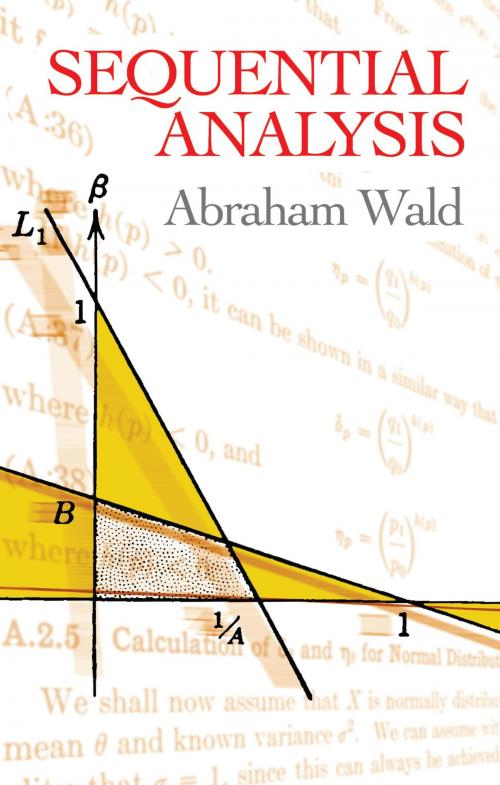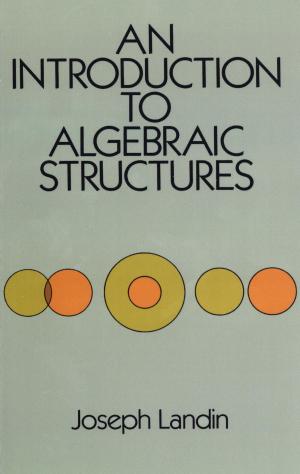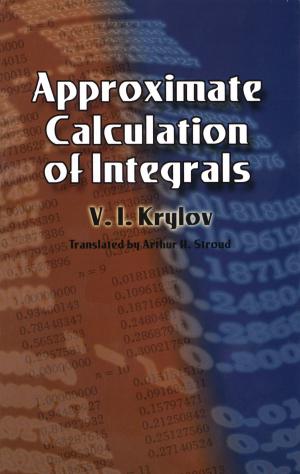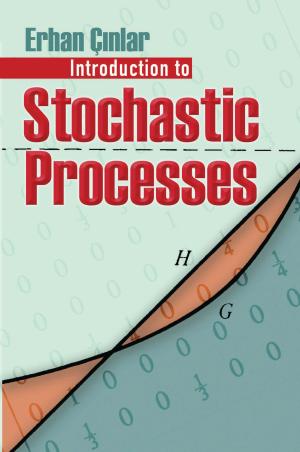| Author: | Abraham Wald | ISBN: | 9780486783239 |
| Publisher: | Dover Publications | Publication: | November 26, 2013 |
| Imprint: | Dover Publications | Language: | English |
| Author: | Abraham Wald |
| ISBN: | 9780486783239 |
| Publisher: | Dover Publications |
| Publication: | November 26, 2013 |
| Imprint: | Dover Publications |
| Language: | English |
In 1943, while in charge of Columbia University's Statistical Research Group, Abraham Wald devised Sequential Design, an innovative statistical inference system. Because the decision to terminate an experiment is not predetermined, sequential analysis can arrive at a decision much sooner and with substantially fewer observations than equally reliable test procedures based on a predetermined number of observations. The system's immense value was immediately recognized, and its use was restricted to wartime research and procedures. In 1945, it was released to the public and has since revolutionized many aspects of statistical practice.
This book is Professor Wald's own description of the system. Part I contains a discussion of the general theory of the sequential probability ratio test, with comparisons to traditional statistical inference systems. Part II discusses applications that illustrate the general theory and raise points of theoretical interest specific to these applications. Part III outlines a possible approach to the problem of sequential multi-valued decisions and estimation. All three sections can be understood by readers with only a background in college algebra and a first course in calculus. Mathematical derivations of somewhat intricate nature appear in the appendix.
Sequential Analysis offers statistical researchers a time- and money-saving approach, introduces students to one of the major systems in contemporary use, and presents those already acquainted with the system with valuable background information.
In 1943, while in charge of Columbia University's Statistical Research Group, Abraham Wald devised Sequential Design, an innovative statistical inference system. Because the decision to terminate an experiment is not predetermined, sequential analysis can arrive at a decision much sooner and with substantially fewer observations than equally reliable test procedures based on a predetermined number of observations. The system's immense value was immediately recognized, and its use was restricted to wartime research and procedures. In 1945, it was released to the public and has since revolutionized many aspects of statistical practice.
This book is Professor Wald's own description of the system. Part I contains a discussion of the general theory of the sequential probability ratio test, with comparisons to traditional statistical inference systems. Part II discusses applications that illustrate the general theory and raise points of theoretical interest specific to these applications. Part III outlines a possible approach to the problem of sequential multi-valued decisions and estimation. All three sections can be understood by readers with only a background in college algebra and a first course in calculus. Mathematical derivations of somewhat intricate nature appear in the appendix.
Sequential Analysis offers statistical researchers a time- and money-saving approach, introduces students to one of the major systems in contemporary use, and presents those already acquainted with the system with valuable background information.















